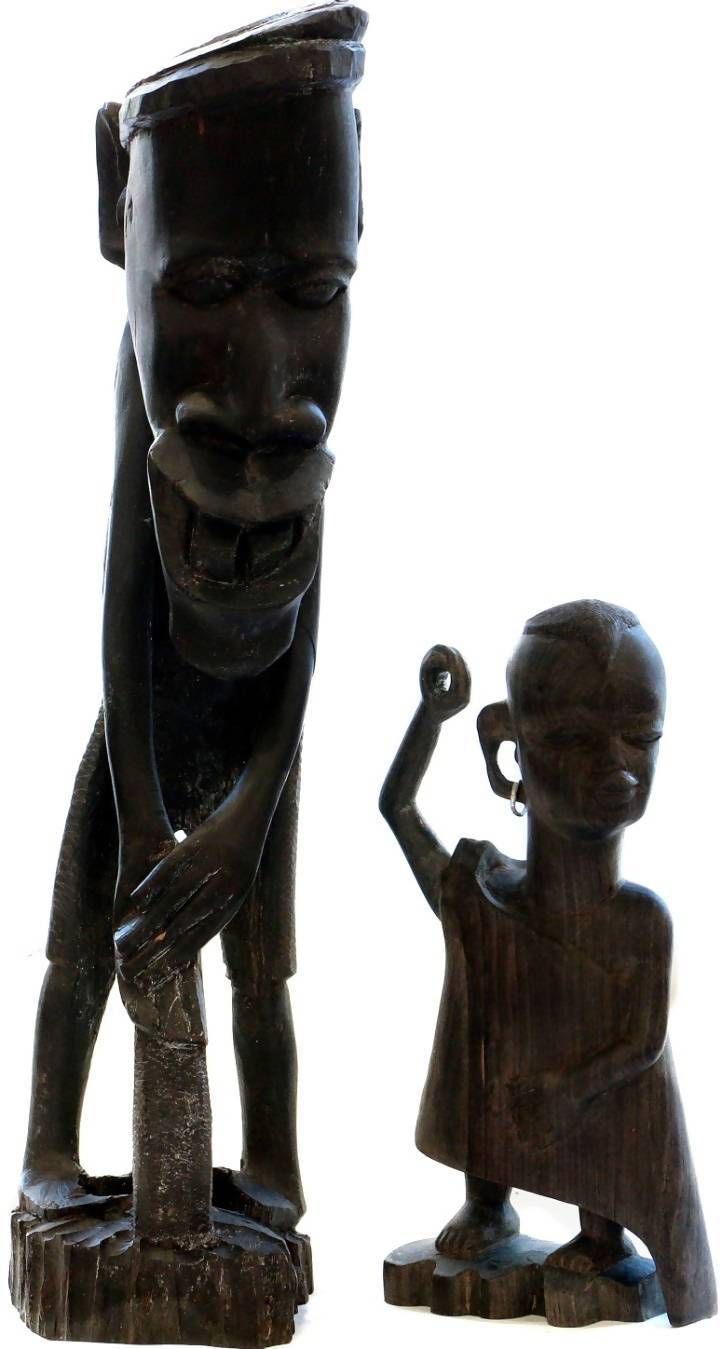
Nelson Mandela Day is celebrated on July 18, as a way to honor the life and legacy of one of the important leaders against the Apartheid regime. During your whole life,sought to resolve conflicts through peace andfought to ensure social, political and economic equality. As a way to celebrate this special day, we present five African artists,many of them self-taught, who cThey managed to build a renowned career, and their works are currently present in numerous museums and private collections around the world. Discover in this article the life and professional practice of these five artists who changed the art scene through their works.
Malangatana
The multifaceted and self-taught artist brave Malangatana Ngwenya (1936-2011), expressed its culture through various means and techniques, such as dance, music, poetry, theater, tapestry, ceramics and sculpture. His paintings are characterized by the colors, shapes and movements of the facial features, which convey African roots, revealing stories, traditions and ways of life. He became one of the most internationally known African artists due to his extensive production in the field of painting on the theme of decolonization and the independence of Mozambique. His works currently reach auction records and are on display in numerous museums and private collections around the world.

Malangatana, 1965
Roberto Chichorro
In a magical world of memories, Roberto Chichorro (1941) vividly expresses the characteristics of the Mozambican people in his paintings. He began his career in the world of design, starting with the Civil Construction Industrial course. In 1967, he held his first exhibition at the Cooperativa das Casas de Lourenço Marques, but it was not until 1980 that he devoted himself entirely to painting. The exuberance and vibrancy of the colors is transmitted to strong experiences, from the armed struggle in the times of the Revolution in Mozambique to the social repression between the 1940s and the beginning of the 1970s. that stands out for being always intensely colored.
 Roberto Chichorro, 1999
Roberto Chichorro, 1999
Makonde
The sculptural art of the Wa-Makonde, or simply Makonde, became known in the mid-1950s, when sculptors began to create new forms and commercialize them. The predominant material is a light and soft wood, the Sumuameira brava. The sculptures have a technical and movement level that is different from the rest in this region. These works stand out for their traditional manifestation of rituals, such as the so-called Mapiko masks, which are linked to the complex male initiation rituals called likumbi. Since its discovery, Makonde art has managed to acquire great notoriety in the art world for its uniqueness.

George Lilanga
Inspired by Makonde artworks, George Lilanga (1934-2005) created portraits of the traditional figures of that culture. The paintings on wood, produced in rich, bright colors, offer a contemporary take on a unique style. The artist began his career in 1961 in Lindi, a region known for its profound culture linked to dance initiation rituals and sculptural tradition. The figures, stories and all the emotions of Makonde culture were the greatest inspiration for his impactful compositions. His works have been exhibited in several countries and in several prestigious museums such as the Center Pompidou and the Guggenheim Bilbao.
Joaquim Canotilho
With a unique look at everyday life, Joaquim Canotilho (1953) subtly paints the beauty of cities, animals, people and their habits. From wild animals to Catembe fishermen, the Mozambican artist portrays, in a genuine way, the world around him, as a way of preserving a memory of it. Essentially using the watercolor technique, he conceives harmonious and smooth representations of the particularities of countries such as Mozambique, Portugal and Brazil. Oil painting, gouaches and serigraphy are other techniques used byJoaquim Canotilho. He participated in several competitions and exhibitions, collective and individual in several countries.
 Joaquim Canotilho, 2006
Joaquim Canotilho, 2006

